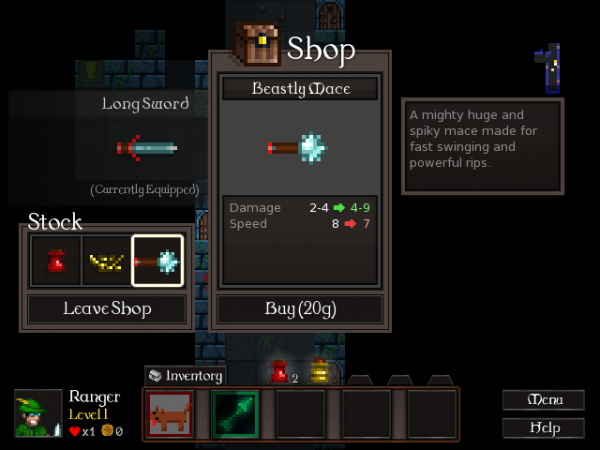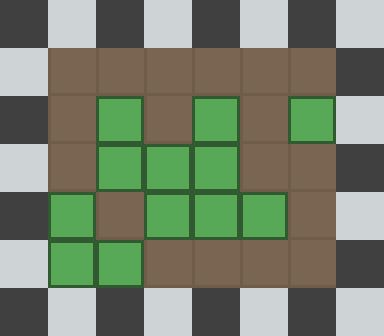Wow – I haven’t had any spam on this blog over the past few days. Recently I’ve been fending off a flood of the stuff, especially trackback spam… but now I’ve got comments locked down on everything except the latest posts, comments can’t contain URLs and I’ve just disabled trackbacks entirely. Maybe I’ve got it licked?
I also lost some time this week tracking down and closing an exploit due to an outdated WordPress theme, if you can believe it, after a hacker tried to have a poke around (look up TimThumb; even if you’re not using a theme that contains it, having it installed leaves your server wide open). Basically, maintaining a web presence can be a pain in the arse 😀
Anyway! DEVELOPMENT NEWS.
Shops in roguelikes have always bugged me a bit. Diablo’s towns make a sort of sense, as does the town halfway through Nethack’s mines, but they’re very specific answers to this problem of where you can trade stuff. In general roguelikes just have random shops in the middle of nowhere, staffed by a single shopkeeper, with dozens of monsters banging around outside. Dungeons of Dredmor does exactly this. It’s always felt a bit weird.
So CQ2’s got scavengers.
Scavengers aren’t exactly shopkeepers. They’re foragers, sneaking around dungeons and battlefields, staying out of trouble (with invisibility) and picking up anything valuable they find. And, what do you know – they’ll sell it to you, if you’ve got the coin.
I haven’t got the shop in yet, but it’ll be a basic extension of the item comparison screen. Scavengers will only have two or three items worth buying, which simplifies things. Here’s a mockup:
Scavengers or wandering merchants wouldn’t work in everything, but it feels like a plausible way of letting you buy stuff in the middle of apocalyptic hellholes.
Oh – and it feels nice and bleak to have NPCs in the game make a living by going out there and nicking the boots off dead people.
















